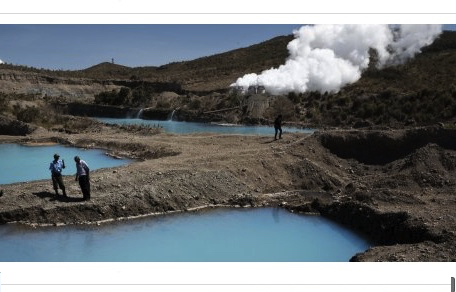. . SUSTAINABLE DEVELOPMENT . .
An article in the Huffington Post by Achim Steiner, UNEP Executive Director and Under-Secretary-General of the United Nations
Having two parties agree on a common goal can be a challenge. Having 193 parties agree to 17 of them is, to understate it, uncommon. So when the Sustainable Development Goals are adopted this week by 193 UN Member States, it’s fair to say we will be witnessing something historic.

Having all nations concur on a path forward for the entire planet and its peoples is unprecedented, and indeed, an accomplishment in and of itself.
But despite the enormity of the task, setting the goals was the easy part. Achieving them is where the hard work begins in earnest. With 17 goals that integrate all aspects of our economies, societies and the environment, the challenge is formidable. That these goals apply to all nations — developed and developing — means that the challenge is a universal one.
The cross-cutting, global nature of the goals necessitates a degree of cooperation as unprecedented as the goals themselves.
Nations of the world recognized this fact as the goals were being developed. To help enable the coordination needed to achieve them, member states included what might be called a meta-goal: SDG 17. The intent of Goal 17 is to advance the notion of partnerships, from local to global, that will be fundamental to achieving the other 16 SDGs.
We have seen the power of partnerships and cooperation in the 193-nation consensus on a sustainable future. That power must now be harnessed to take us there.
Having all countries of the world on board is only the beginning. Sustainable development will need participation and cooperation between governments, the private sector and civil society.
Why is this so? Aside from the fact that the SDGs are shared goals for all humanity, it comes down to an unyielding reality: no single institution possesses the resources and competencies needed to achieve these goals alone.
Investment on a massive scale will be required in sectors such as energy, infrastructure, transport and information technology to support sustainable-development objectives.
Technology, policy coherence and governance will also need to be aligned with the goals of sustainable development.
(Article continued in right column.)
(Article continued from the left column)
When it comes to financing, according to the United Nations Conference on Trade and Development, some $5-7 trillion will be needed annually to achieve the SDGs.
Public finance can only contribute so much.
Consider the investments required to adapt to climate change over the coming decades. Climate resilience will be a critical component of sustainable development. According to UNEP’s first Adaptation Gap Report, the global investment required for adaptation to climate change is likely to hit $300 billion per year until 2050 — possibly rising as high as $500 billion.
In 2013, the total amount of public climate finance was $137 billion.
Making up the difference seems like a daunting task.
This is where potential of global partnerships comes into play. In 2013, private climate financing totaled $193 billion.
This is still short of what is needed for climate finance, let alone the trillions more required to support sustainability across all sectors over the coming decades. But it is a point on a trend that shows an increase in sustainable investments over time from both public and private sectors.
These investments are already resulting in remarkable changes. Take renewable energy as an example, in 2014, about half of all energy-generating capacity built in the previous year was renewable. The Africa Renewable Energy Initiative is working to mobilize billions of dollars in public and private financing to achieve 10,000 MW of installed renewables capacity on the continent by 2020.
These remarkable statistics speak to two shifts that will need to continue in order to achieve the SDGs. The first is increased alignment of public-policy and private-sector initiatives. The second is the ability of public finance to catalyze private investment.
On technology, policy and governance, we have already seen the potential of partnerships to change the world.
Thirty years ago, the international community came together to tackle the challenge of the growing hole in the ozone layer. The result was the Montreal Protocol and the phasing out of ozone-destroying cholorfluorocarbons (CFCs). Now, the ozone layer is on track to heal by mid-century.
The UNEP-supported Partnership for Clean Fuel and Vehicles played an important convening role in phasing out lead in fuel, which has resulted in a dramatic reduction of lead-exposure health problems.
And currently, the 100-member Climate and Clean Air Coalition, which UNEP hosts, is actively working to reduce air pollution.
Cooperation engenders success. That’s why partnerships like these are at the core of the goals of sustainable development. No one government — and not even 193 of them — will be able to realize sustainable development without working together.
(Thank you to Janet Hudgins, the CPNN reporter for this article.)